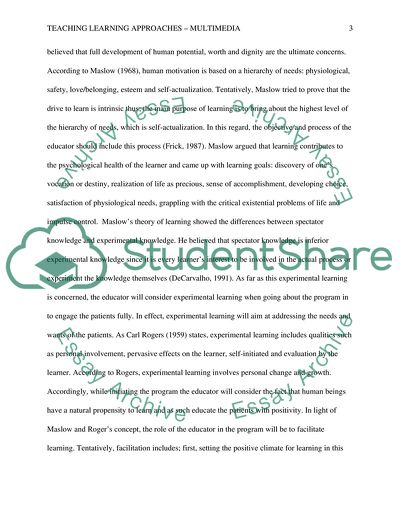Cite this document
(“Teaching Learning Approaches - Multimedia Essay”, n.d.)
Retrieved from https://studentshare.org/nursing/1645244-teaching-learning-approaches-multimedia
Retrieved from https://studentshare.org/nursing/1645244-teaching-learning-approaches-multimedia
(Teaching Learning Approaches - Multimedia Essay)
https://studentshare.org/nursing/1645244-teaching-learning-approaches-multimedia.
https://studentshare.org/nursing/1645244-teaching-learning-approaches-multimedia.
“Teaching Learning Approaches - Multimedia Essay”, n.d. https://studentshare.org/nursing/1645244-teaching-learning-approaches-multimedia.


